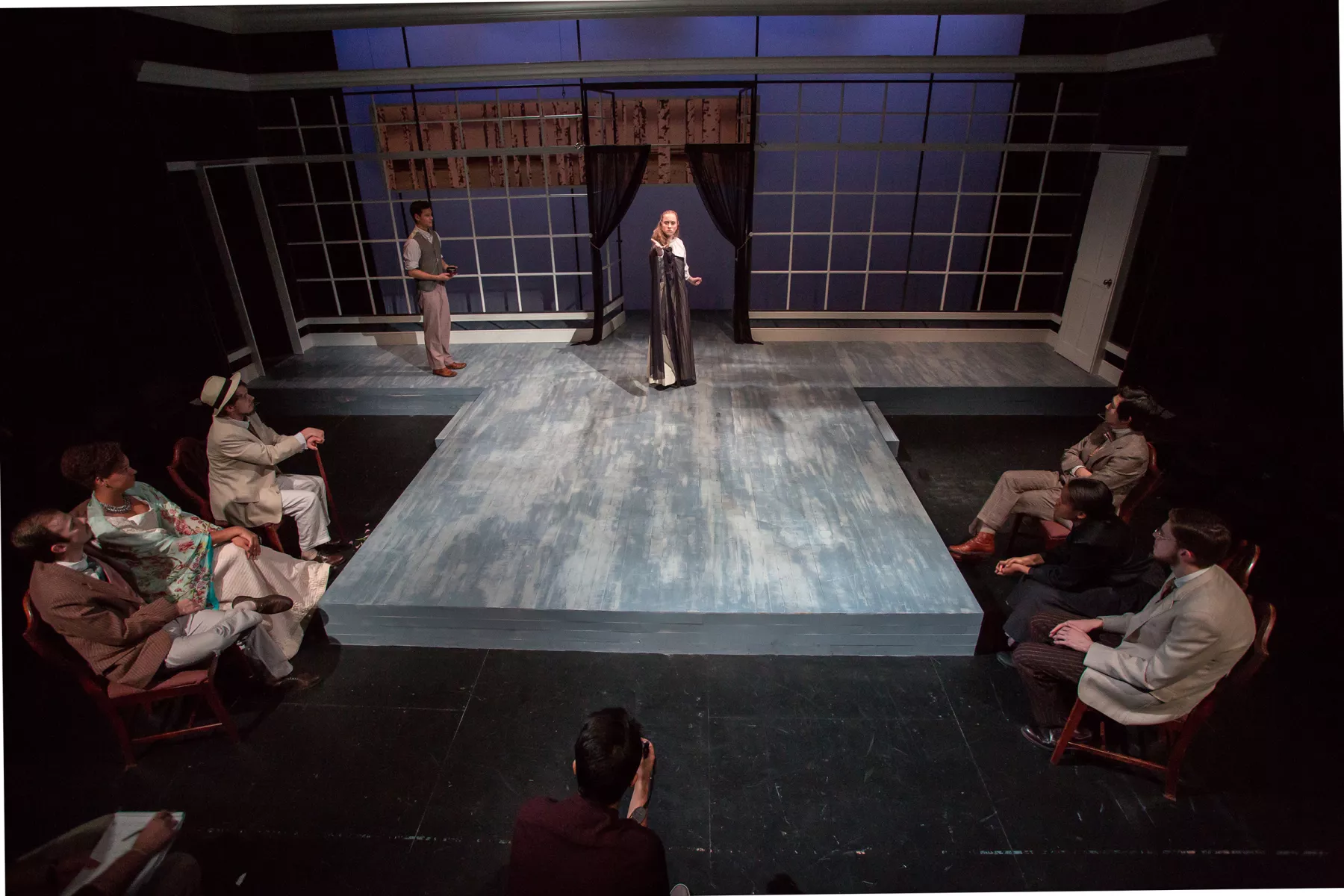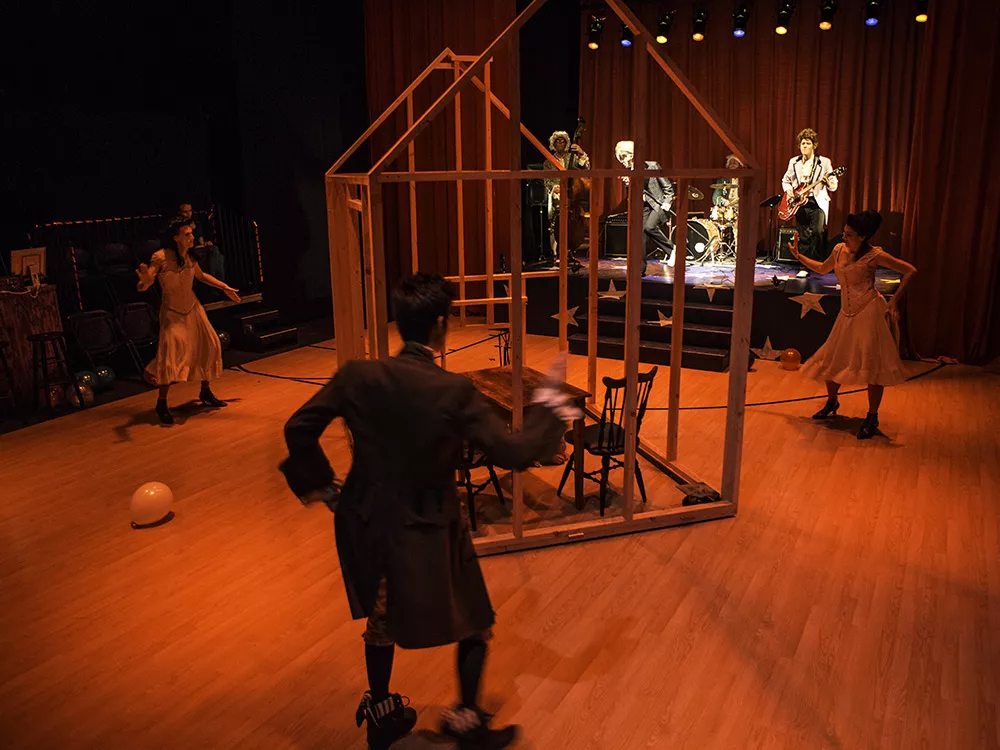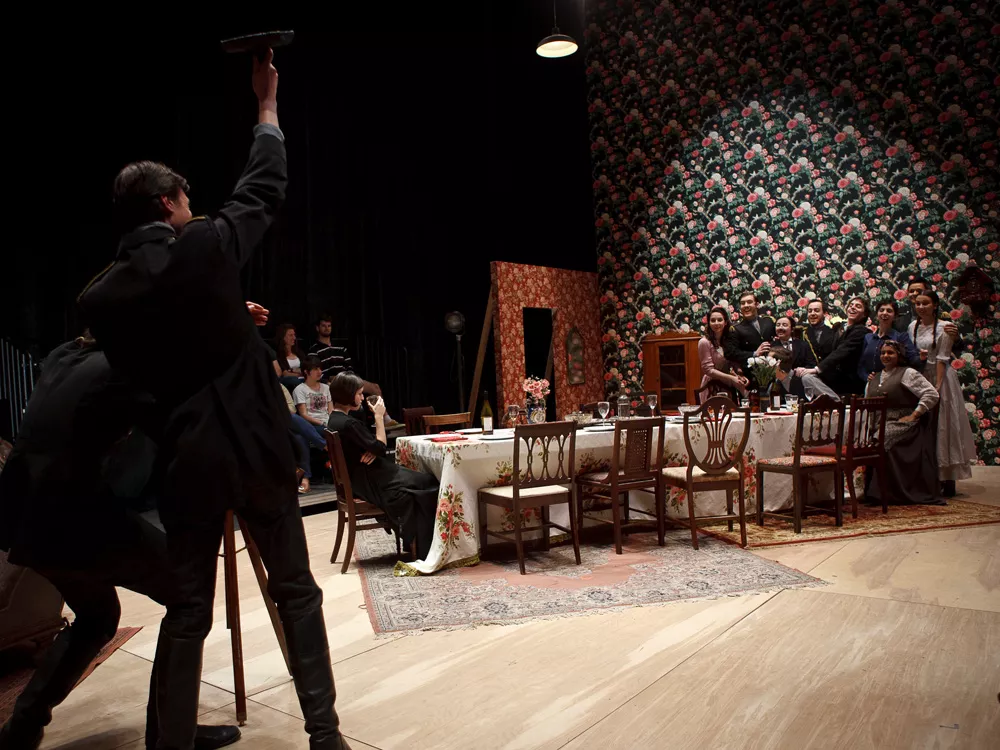Facilities

The Seagull (2016). Set design by Colin McIlvaine.
The main performing spaces and classrooms used by the Department of Theater are in the Eugene and Theresa Lang Performing Arts Center (LPAC), which opened in January 1991. The LPAC spaces include the Pearson-Hall Theatre, the largest performing stage on campus, the Frear Ensemble Theatre, the smaller 'black box' theater, the Troy Dance Lab, a large dance studio mainly used for dance classes, and the Boyer Dance Studio, a smaller dance studio.
In addition to the LPAC, the Matchbox on the south end of campus houses the Kuharski Theater Studio as well as a large common space upstairs that is often used for dance and theater rehearsals. The Kuharski Studio offers a multifunctional rehearsal and classroom space for the department that features multimedia components.
Besides the curricular spaces, students have the opportunities to work on other types of projects around campus - opera, dance, music, capoeira, site-specific events, visual arts and more - in other sites on campus including Lang Music Center, Olde Club, and Upper Tarble All Campus space. The LPAC also houses a number of academic and administrative departments, as well as the List Gallery, which regularly sponsors both contemporary and historical exhibitions by both emerging and nationally-known artists that complement and strengthen the studio art and art history curriculum.





